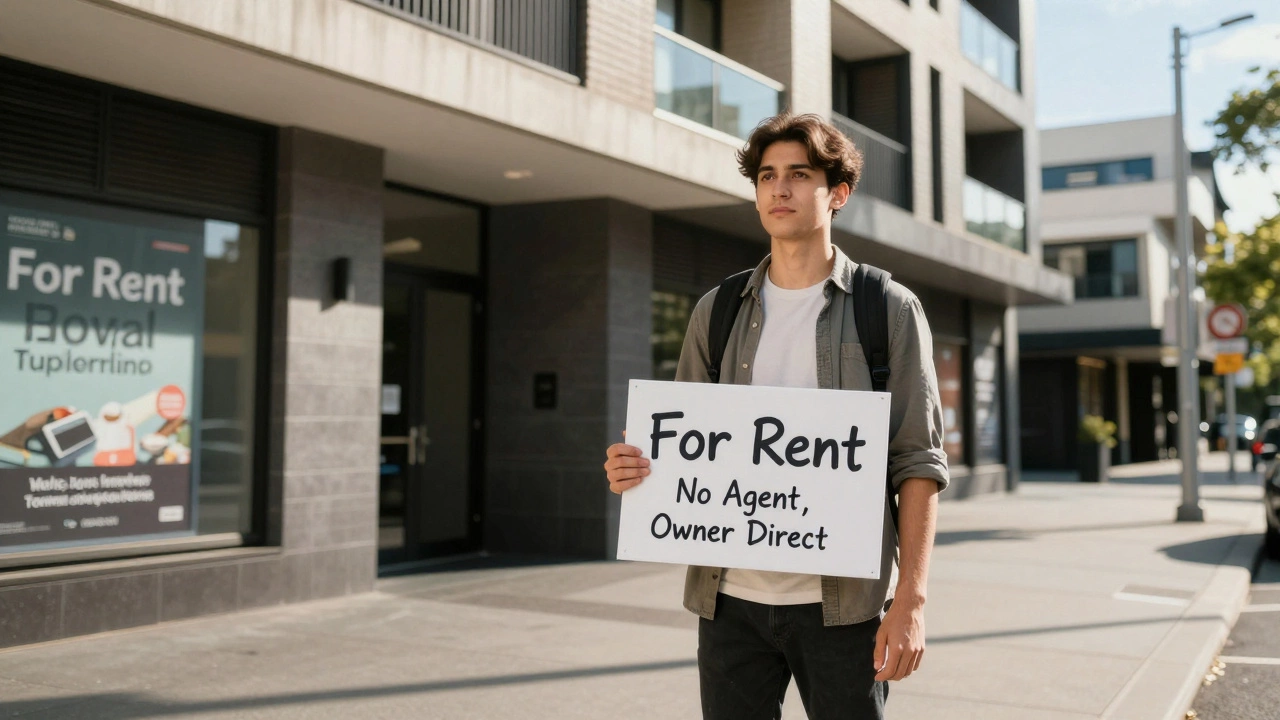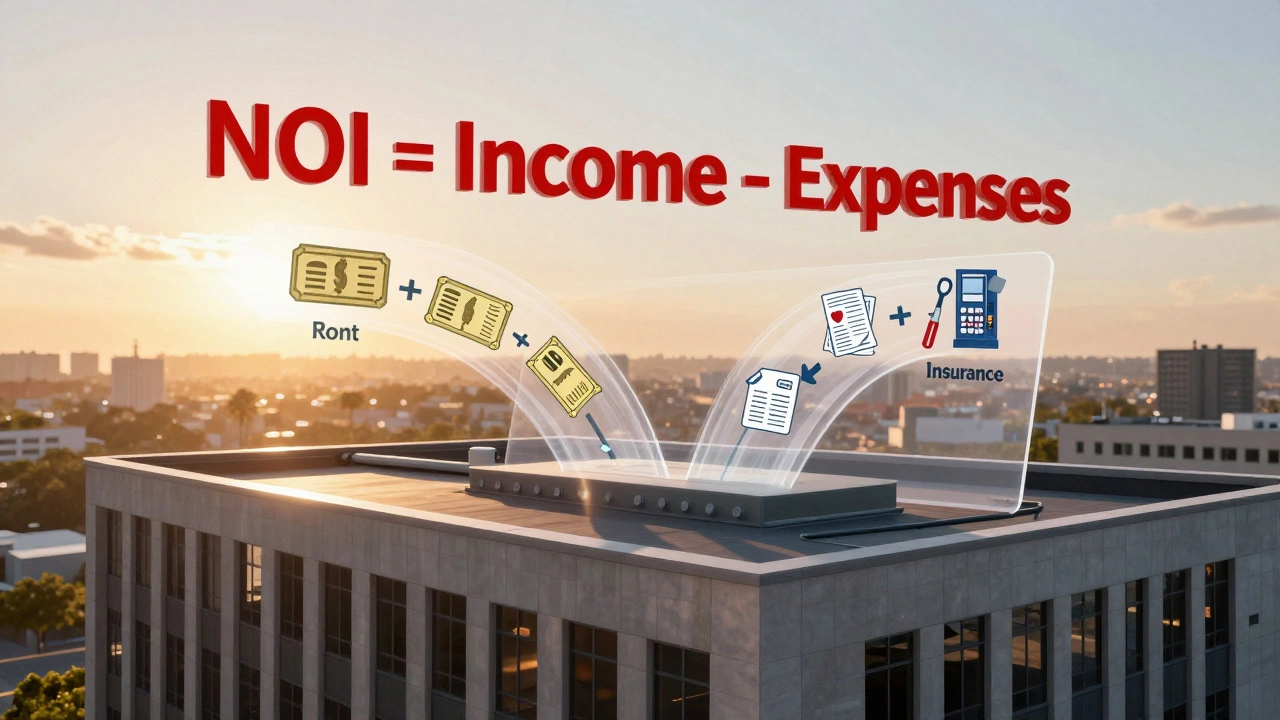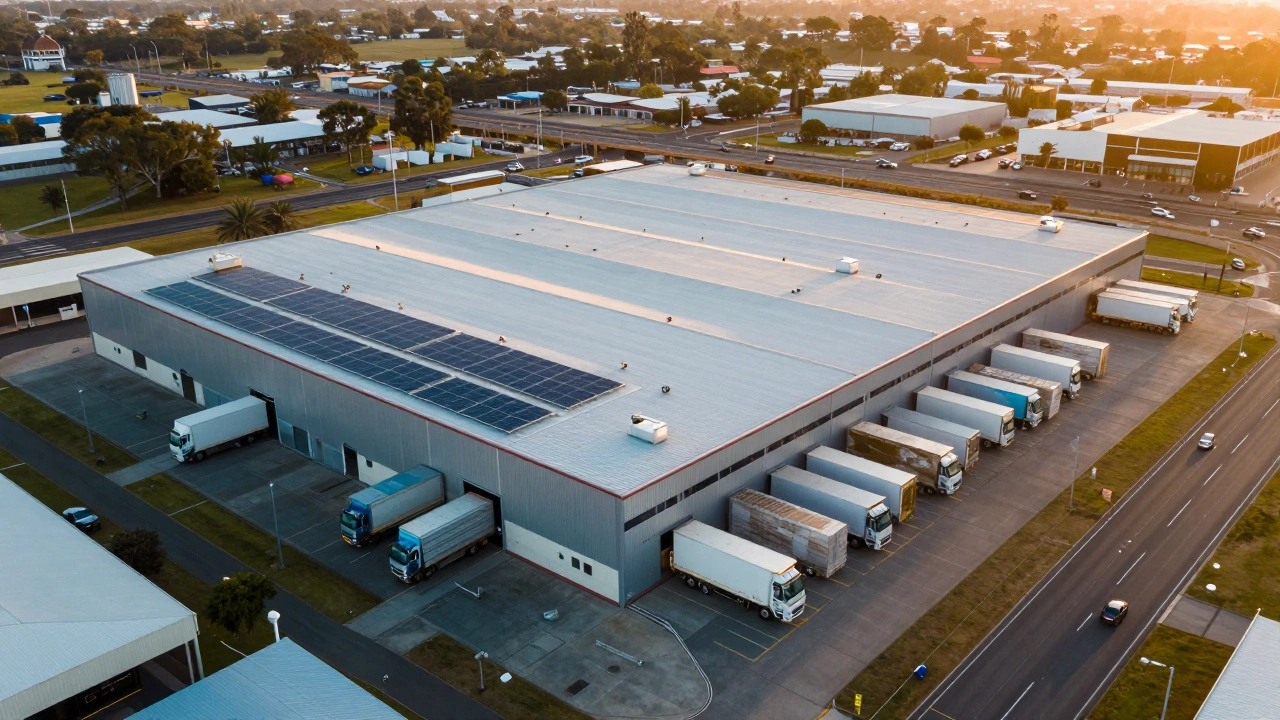Diving into the world of commercial real estate can be both exciting and daunting. While the potential for profit is appealing, it's crucial to understand the hurdles one might face. Investors often get swept away by the promise of returns without fully grasping the challenges involved.
Commercial properties require a significant financial outlay, which can deter many first-time investors. The stakes are high, and the market doesn't always guarantee a quick return on investment. Throughout this article, we'll walk you through the less-talked-about challenges of this field.
From the unpredictability of property markets to the intricacies of managing large assets, navigating these waters requires insight and foresight. We'll also touch upon how economic trends and tenant behavior can significantly affect your investments. So, let's delve deeper into the cons of commercial real estate and uncover what you truly need to be mindful of.
- High Initial Investment
- Market Volatility
- Management Complexities
- Economic Influence
- Tenant Challenges
High Initial Investment
Entering the domain of commercial real estate often demands a hefty financial commitment upfront, a factor that cannot be ignored. Unlike residential properties where the entry costs might be relatively moderate, commercial properties require investors to put down substantial capital. This can range anywhere from hundreds of thousands to millions of dollars just to secure a stake. The higher price tags are due to the expansive size and the multifaceted nature of these assets, which often include multi-unit buildings, retail centers, and office complexes. This initial investment acts as a significant barrier for many potential investors, effectively filtering out those without considerable financial backing.
This financial hurdle is coupled with not just the purchase price, but also the ancillary costs that accompany the acquisition of commercial properties. Consider expenses such as due diligence fees, appraisal costs, legal fees, and often underestimated, but equally crucial, the costs for property improvements or adhering to local zoning laws. These can quickly add up, further inflating the initial price of getting into commercial real estate. The Financial Industry Regulatory Authority often stresses the importance of understanding these hidden costs.
"Rushing into an investment without a full accounting of upfront costs can endanger profitability and raise the risks involved," - FINRA.
Moreover, securing financing for such grand investments can be complex and not easily attainable for every interested party. Financial institutions tend to have stringent lending criteria when it comes to commercial real estate loans. This not only includes credit checks and proof of income but often requires investors to have robust business plans that project future income streams. Lenders prefer to see a track record of successful management of similar assets, which can be daunting for first-time investors. This makes having an excellent credit score and a compelling business plan indispensable components for those seeking bank assistance in financing their commercial real estate ventures.
There's also the fact that the high initial investment ties up capital that could otherwise be deployed elsewhere. This opportunity cost is an essential consideration for savvy investors who might be weighing different asset classes. While some investors are comfortable with their capital being locked into a long-term venture, others might find the lack of liquidity a significant disadvantage. Commercial real estate isn't easily convertible to cash, and accessing funds when tied up in such investments can be challenging unless through structured refinancing or eventual sale, both of which require more intricate planning and market involvement.
To summarize, while the allure and potential returns of commercial real estate are attractive, the initial price tag acts as a formidable gatekeeper. Prospective investors must carefully weigh their financial capacity and risk appetite before jumping into this asset class. Strategic financial planning and consultation with investment experts can serve to mitigate some of these entry barriers, offering a clearer picture of the profitability landscape and preparing for any contingencies that might arise in the life cycle of a commercial property investment.
Market Volatility
The commercial real estate market is notorious for its unpredictable nature. Like any other investment sector, commercial properties experience cycles of ups and downs. This volatility often arises from the broader economic environment, changes in consumer behavior, and even government policies. One moment, property values may be soaring, fueled by economic confidence and growth. The next, they could drop sharply due to a crisis or economic slowdown. This unpredictability means that investors need to remain vigilant and adaptable, constantly monitoring trends and forecasts to make informed decisions.
Historically, periods of economic downturn have exerted significant pressure on commercial real estate. For instance, during the 2008 financial crisis, property values plummeted, and many investors found themselves with assets worth far less than their initial purchase price. The speed at which the market can shift demands a readiness to act swiftly, either to safeguard investments or capitalize on opportunities when the tide turns. It’s worth noting that commercial real estate often lags behind the broader economy, which means downturns might not be immediately apparent in property values but can impact the sector just as profoundly.
This aspect of market volatility is evident in the diverse performance of different commercial sectors. Office spaces, retail units, and warehouses each have their own unique responses to market changes. For example, the retail sector faced unprecedented challenges with the rise of e-commerce and changing consumer habits, leading to a noticeable shift in demand and property valuation. As trends continue to evolve, investors must remain informed and flexible, ready to pivot strategies if necessary. Embracing data analytics and industry reports can help in navigating these tricky waters.
"Real estate markets are dynamic entities that react to economic swings, changing demographics, and technological innovations," notes a report from the Urban Land Institute.
Given these uncertainties, diversification becomes a key strategy for mitigating risks associated with market volatility. By spreading investments across various sectors or geographical areas, investors can hedge against potential losses if one segment underperforms. This strategy, however, requires careful planning and a thorough understanding of different market areas and sectors, making it a double-edged sword if not executed with precision.
Commercial real estate investors also need to consider how interest rates play a crucial role in market volatility. As rates rise, borrowing costs increase, making it more expensive to finance property purchases. Consequently, higher interest rates can dampen investor enthusiasm and slow market activity. An awareness of the broader economic indicators and central bank policies can offer valuable insights when planning investment moves. Being proactive and staying ahead of such trends can help in minimizing the impact of volatile market shifts.

Management Complexities
When it comes to commercial real estate, one of the most significant hurdles is managing the property itself. Unlike residential real estate, which typically involves long-term leases and more predictable occupancy, commercial properties require an intricate juggling act involving multiple elements. From handling tenant relationships to maintaining the property's physical condition, the responsibilities can quickly become overwhelming. Successful management hinges on one's ability to foresee and prevent issues before they escalate, which isn't always straightforward, especially for inexperienced investors.
First, there is the need for effective tenant management. Commercial leases can be complex and vary significantly between tenants, demanding a sharp eye for detail and a good understanding of legalese. It's crucial to establish clear communication channels and to foster strong relationships with tenants to ensure smooth operations. This can prevent issues related to lease renewals and disputes from arising, which can be detrimental to your investment if not handled properly.
Managing the physical aspect of the property is another critical component. This involves regular maintenance and timely repairs, both of which entail a considerable amount of time and money. Properties that are not adequately maintained can become liabilities, leading to increased vacancies or decreased property value. Performing regular inspections, planning preventive maintenance, and having a reliable team of contractors are all part of the puzzle, and failing to put them in place can have significant repercussions.
Financial management also comes into play, requiring an astute understanding of financial statements, rent collection, and expense management. Cash flow needs to be scrupulously monitored to ensure the property remains profitable. Not to mention, commercial properties often come with higher operating costs – like utilities, security, and insurance – which need to be meticulously managed.
“You don't just own the property; you manage a business,” as noted by Alan Greenspan, former Chairman of the U.S. Federal Reserve. This statement might sound simplistic, but it underscores a profound truth about managing commercial real estate. The property essentially operates as an independent business entity, requiring strategic planning and execution to thrive.
Additionally, technology can significantly aid management tasks, but it also adds another layer of complexity. Adopting property management software or systems can streamline operations, yet requires an initial investment of time to get acquainted with these digital tools. Balancing human and technological resources effectively can be the difference between smooth sailing and a stormy voyage.
The challenges extend to legal and regulatory compliance as well. Zoning laws, safety regulations, and environmental laws need constant monitoring. Non-compliance can result in fines or even legal disputes, underscoring the need for owners to stay informed and proactive.
Lastly, the market is ever-evolving, and keeping abreast of industry trends is essential to staying competitive. Understanding how shifts in the economy, like changes in consumer behavior or technological advancements, impact the commercial real estate landscape is vital for sound decision-making. Knowledge is not just power in this field; it's also the safety net against potential pitfalls.
Economic Influence
The realm of commercial real estate is intrinsically tied to the larger economic environment, making it a field that must be navigated with both caution and awareness. Economic fluctuations can greatly influence property values, rental incomes, and investor returns. During times of economic boom, demand for commercial properties usually surges, driven by the expansion of businesses and increased consumer spending. Conversely, an economic downturn can lead to a stark decrease in demand, directly impacting vacancy rates and rental yields. As businesses face financial strain, they may downsize, consolidate, or shut down completely, which in turn affects their ability to fulfill lease obligations.
It's essential to note that commercial properties are often seen as long-term investments. Unlike residential properties, where cycles can be shorter, commercial real estate is more susceptible to longer economic shifts. This means that market recovery may take several years, testing the resilience and strategy of investors. Moreover, inflation plays a dual role; while it can erode purchasing power affecting overall economic growth, it might increase property values over time if managed correctly. However, a rapid inflation increase poses risks by rising borrowing costs that deter investments, potentially leading to a cooling off in markets that previously seemed untouchable.
"The commercial property market has a historic main correlation with macroeconomic factors," says economist Lisa Brown. "Understanding these tie-ins can often be the difference between profiting from and suffering through market waves."Within this dynamic landscape, interest rates hold significant sway. When central banks adjust rates in response to economic conditions, the cost of financing commercial properties could either open doors to opportunities or create barriers for entry. Higher rates generally mean higher repayment costs, shrinking the pool of willing investors. Meanwhile, lower rates might encourage investment but can heighten competition and inflate asset prices.
The influence of global events on local economies should not be ignored. Geo-political tensions, trade agreements, and pandemics have shown to abruptly alter economic landscapes, leaving commercial sectors reeling from rapid changes. This unpredictability requires investors to stay informed and agile, ready to adapt strategies on the fly. Long-term success in commercial real estate investments may often depend more on how well one navigates these economic tides than on the properties themselves. Seasoned investors often promote diversification of portfolios to buffer against localized economic disruptions, highlighting a proactive approach toward mitigating risks associated with economic influences.

Tenant Challenges
Investing in commercial real estate often means dealing with tenants, and this can introduce an array of challenges that investors must navigate carefully. First and foremost, tenant turnover is a significant issue. Unlike residential properties where leases might be on a year-to-year basis, commercial property leases can run multiple years. When a tenant decides not to renew, finding a new one can take considerable time, impacting cash flow negatively.
Furthermore, tenants in the commercial sector may demand specific alterations to the property, known as tenant improvements. These changes, while potentially beneficial, come at a cost and can lead to disputes if not handled with clear contracts. Such improvements are often customized based on the tenant’s operational needs, such as the layout of an office or retail space, and these changes might need reversal or adaptation for future tenants.
Another layer of complexity arises from the nature of the businesses themselves. Economic fluctuations can severely affect a tenant's ability to afford rent. Businesses might suffer during economic downturns, impacting their ability to pay on time or, worse, forcing them to shutter doors. A quote from the National Real Estate Investor noted,
"Even in periods of growth, businesses can face unforeseen challenges that directly impact their lease performance and landlord expectations."This variability adds a layer of financial unpredictability to property investments.
Stemming from economic variability is the risk of default, which can create legal headaches for property owners. Handling a tenant who cannot meet their financial obligations often involves lengthy and resource-intensive legal processes. Additionally, legal requirements vary across municipalities, requiring owners to be intimately familiar with statutory obligations in their location.
Market dynamics continuously fluctuate, and with them, the types of businesses occupying commercial spaces. As a result, owners may find themselves in a position to adjust rental strategies or offer greater incentives to attract tenants. Data from a 2023 commercial property survey indicates that as much as 25% of owners had to renegotiate lease terms in that year alone, a testament to the unpredictable nature of this sector. Handling these adjustments requires skill and attentive market analysis.
Lastly, tenant relations are paramount. Having a cooperative and communicative relationship with tenants can mitigate many of these challenges. Effective communication builds trust and can lead to smoother negotiations and better understanding of mutual needs. Participating in periodic check-ins, requesting feedback, and being responsive to tenant needs can enhance retention, ultimately aiding in minimizing vacancy gaps.
In summary, navigating the tenant landscape in commercial properties requires a strategic approach, combining financial acumen with interpersonal skills. Ensuring clear, legally-sound leasing agreements and maintaining a healthy communication channel with tenants are essential practices for tackling the inherent challenges within the sector.





